 If you haven’t heard, the British Journal of Sports Medicine released new guidelines this year directed at employees who sit at work for most of the day. Finally, recommendations to combat the effects of long-term sitting are available. Follow this formula immediately to improve your overall sense of well-being. 20 minutes of sitting ---> 8 minutes of standing ---> 2 minutes of stretching/moving NASA also did their own research. Their findings stated that standing for two minutes, 16 times per day helped to maintain bone and muscle density. Another part of the study says that people who work on their feet at least two hours per day are less likely to suffer from chronic diseases. The bad news is if you are a regular exerciser and also sit most of the day at work without a break from sitting, you don’t compensate for the negative effects of sitting. The negative effects from sitting include increased systemic inflammation that leads to diabetes and cardiovascular disease - two of the most common causes of mortality, besides cancer. Although this may be a “downer” to most, the Health Psychology Review said that improvement has been shown by providing education about the dangers of sitting, restructuring work environments, goal-setting related to moving throughout the day, recording sitting times, or alerting people when they should stand. The bottom line is that you don’t have a run a marathon or a fitness junkie to prevent chronic disease. Focusing on moving more throughout the day is a solution that can fit into any environment. To combat chronic disease and develop a personalized solution to become more active, contact TrainKC at [email protected] or call (913) 593-7549. Don’t forget the 30 minute rule! 20 minutes sitting, 8 minutes standing, 2 minutes stretching, 20 minutes sitting, 8 minutes standing, 2 minutes stretching, 20 minutes sitting, 8 minutes standing, 2 minutes stretching, 20 minutes sitting, 8 minutes standing, 2 minutes stretching……. To read more, visit http://www.wsj.com/articles/the-price-we-pay-for-sitting-too-much-1443462015.
0 Comments
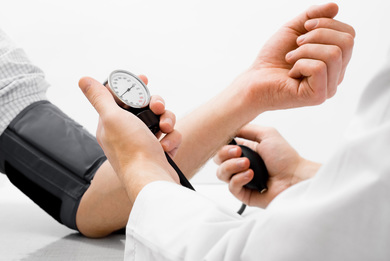 According to the Center of Disease Control, one in three Americans have high blood pressure. In addition to medication, attention to physical activity should be addressed. Starting an exercise program when you have high blood pressure can be complicated without doing research. Certain requirements are a must when first starting or continuing your current routine. The American College of Sports Medicne (ACSM) recommends a physician’s release to exercise as a first step. Fitness professionals would then prescribe the following guidelines, taking into consideration your physician’s advice, to begin a safe, successful workout routine that will boost your overall fitness while lowering your blood pressure. 1. Aerobic exercise is the focus, so first identify your preferred mode of aerobic activity such as walking, running, elliptical training, or biking. 2. Calculate your maximum heart rate. (220-age = maximum heart rate) 3. Start your aerobic exercise program, staying at about 50-60% of your maximum heart rate (220-age x 50-60%). The length of time can vary according to your tolerance. 30-60 minutes is ideal for most days of the week. Monitoring your heart rate before, during, and after physical activity is necessary to ensure you are getting the most benefit from your activity. 4. You can add some resistance training, performing each exercise for 10-20 repetitions for 1-3 sets. The key to safe resistance training is to avoid isometric exercises and heavy lifting, and maintaining steady breathing. Medications prescribed by your doctor should be taken in accordance with their recommendations. Aside from medications, preventative care is a great addition to the road to improved health. A moderate level of aerobic activity can lower your blood pressure enough that your doctor may even allow you to stop taking medication while you are having success with your exercise routine. Let TrainKC help you develop a safe and effective exercise program that can help lower your blood pressure and prevent chronic disease. Contact TrainKC at [email protected] or call 913-593-7549 for more information. 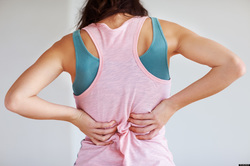 Every Monday through Friday, millions of Americans find themselves in front of a computer screen, behind the wheel of a car, and slouching in chairs at company meetings. All of these everyday activities of a busy life yield to an unfortunate epidemic - bad posture. In your weekly fitness routine, you should include certain exercises that promote healthier posture and help decrease any upper body stiffness that can greatly impact your physical activity. Here is a great workout that will promote strength and flexibility to the affected muscles of bad posture. Prone Cobra (3x15 reps) - Laying on your stomach on the ground, drop your arms to your side and lift the head, shoulders, and chest off of the ground, squeezing your shoulder blades together. Hold this position for 1 second and return to the ground. Bridge (3x15 reps) - Laying on your back, keep your knees bent and feet on the floor. Lift your glutes and hips off of the floor until your body is in a straight line from shoulders to knees. Squeeze your glutes for 2 seconds and return to the ground. Lat Pulldown (3x10-12 reps) - Draw down your shoulders as you pull the weight down toward the top of your chest. Cable or Machine Row (3x10-12 reps) - Make sure during this exercise, you keep your back straight, chest high, and squeeze your shoulder blades together. Shoulder Shrugs (3x10-12 reps) - With two moderately weighted dumbbells, shrug your shoulders straight up and roll them back slowly. Try not to roll your shoulders forward as this is what they do when you have bad posture. With these exercises, you should be on your way to recognizing the difference between good and bad posture and will leave you feeling confident with less back and shoulder pain. 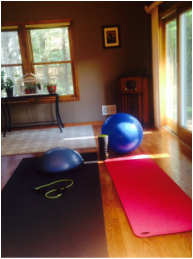 Finding time during the fall season can be challenging when school schedules and distant thoughts of the holidays are crammed into your daily routine. If you do not have time to hit the gym and do not have equipment at home, a quick 20 minute body-weight-only circuit training workout can keep you in shape and feeling great without even leaving the house. 0-3 minutes: Walk up and down a flight of stairs. 3-10 minutes: Complete the following lower-body circuit... 1. Walking lunges - 20 steps 2. Prisoner squats - 15 repetitions 3. Lateral Lunge - 10 each direction 4. Floor bridge - 15 repetitions 10-17 minutes: Complete the following upper-body circuit... 1. Pushups - 10 repetitions 2. Band Row - 15 repetitions 3. Ball Tricep Dips - 15 repetitions 4. Floor Plank - 30 seconds 17-20 minutes: Walk/Run up and down a flight of stairs. If you have a couple of dumbbells, you can also throw in some Bicep Curls and Lateral Shoulder raises for more variety during the upper-body portion of the workout. The key is to keep moving for 20 minutes, maintaining an elevated heart rate so you will feel energetic upon completion of the workout. Although 30 minutes of exercise is recommended for most days of the week, breaking up this time in smaller bouts throughout the day can bring you similar results. Do the most you can to start or end your day the right way in the comfort of your home! After finishing up a summary on walkable communities and what the ideal vision of these places may look like, I’d like to name areas of Kansas City that I would consider walkable. These are communities with easy access to food and grocers, friendly pedestrian sidewalks and crosswalks and low crime. I’d also like to mention that although I’ve lived in Kansas City for over eight years, I haven’t been to every single neighborhood. Most of my coverage through personal and work experience covers some of urban Kansas City, the northland, Johnson County (lived for seven years) and Wyandotte County (lived for one year).
The winner of most walkable area (I would not have said this 8 years ago) is Downtown Kansas City. With the addition in the last ten years of Power and Light District with bars, restaurants, entertainment, relatively lower cost of living (for an urban downtown district, anyway) and a large grocery store (Cosentino’s) for residents. I’d also like to mention, accessibility to public transportation is about to skyrocket with the addition of the street cars slated to open next year. If you work downtown, you are lucky to have increasingly endless opportunities to have a full life. Disadvantages may be traffic, noise and an explosion of tourists during high seasons of the holidays, Big XII tournaments and any teenage cult musician who is stopping to perform at the Sprint Center. Cross the state line and make your way to Leawood. The Leawood area around Town Center (119th and Nall) has developed into a one-stop shop for every family. The area includes a mall with an AMC theater, skating rink in the winter, trendy restaurants, a diverse Hen House grocery (has a large kosher deli and a large aisle of ethnic food) and is right by a large network of recreational trails (Indian Creek and Tomahawk Creek Trails). I lived a half mile from the center of this area for a long time and could fill my car with gas, get a car wash and groceries in about 15 minutes. Back over to Missouri, one of the most desireable neighborhoods in Kansas City that is also walkable is Brookside. In the heart of Brookside, residents have some of the city’s best restaurants, coffee shops, two grocery stores, the Trolley Trail and abuts up to Loose Park, a favorite outdoor stop for exercisers and family fun. As public transportation improves in Kansas City proper, I expect the Crown Center/Crossroads and River Market area to exceed its current walkability status. If you live in Gladstone, with enough research about city improvements and location of amenities, it’s pretty favorable for pedestrians. Other communities on the Kansas side that hold their own are downtown Mission (with the new Johnson Drive improvements), The Village and Corinth Square in Prairie Village and Fairway. One major area of concern that is unique to Kansas City is the Zona Rosa area. Although the amenities are endless inside four square miles, traffic is very congested. I’ve sat at the major intersections in the area, noticing the awesome bike lanes and friendly crosswalk lights, but am frightened (even being in a car witnessing) by the behavior of motorists and their disregard for yielding to pedestrians, running through red lights and not stopping before taking a right on red. This is a major crossroad of the Northland, and has one of the best malls in the metro area, but vehicle congestion is a major no-no when it comes to walkability. Continuing to push for these kinds of communities is important in uniting a large metropolitan area. It’s a major motivator to home buyers looking to relocate for convenience and a safe place to raise a family. Increasing your community’s awareness will yield a safer, more productive and happier place to live for you and your neighbors.  I know this isn’t technically a “fitness” post, but I would like to stress the importance of decluttering your life to make room for what matters. It’s safe to say that everyone has an excuse for avoiding exercise, but if you master the willpower it takes to get into a daily routine, squeezing in fitness and removing outside distractions can enhance your enjoyment of physical activity. Here are some ideas:
Doing the smallest version of these pointers could change the flow of your day. Avoid frustration and get organized. To assist in your personal decluttering, please contact TrainKC at [email protected] to help you prepare and manage your time better and become healthier.  The finale of the “Creating Walkable Communities” series presented originally by the Surgeon General attempts to outline the “HOW” in tackling obstacles within communities to promote walking. The list includes community design, programming and policy-driven solutions. When designing a developing community, a more “walkable” community includes smaller blocks, sidewalks that are well connected and direct and convenient pathways that lead to essentials like schools, convenient/grocery stores and healthcare facilities such as walk-in clinics and family practitioners. Safety in these ideal communities clearly separate pedestrians from bikers from vehicles. Healthy communities have smart, planned street lighting and reduced traffic speeds separate lanes with medians. Community programming is beneficial and can be implemented through making easy access to parks schools, and promoting fitness and recreation within the community. A perfect example of programming is the durable exercise equipment added to Mill Creek Park in midtown Kansas City and along the Tomahawk Creek Trail in south Johnson County. Creating variety along these convenient, pedestrian-friendly thoroughways helps create better balanced fitness programming and once person is seen using it, the threat of scary equipment lessens. It’s almost contagious! Programming can also include organizing small groups of people to meet outdoors, increasing enjoyment and safety while improving their sense of wellness. Social support is shown in research to increase levels of physical activity. Community fusion between several sectors are crucial in creating active environments. Land Use, Transportation, Community Design (parks, recreation, fitness, etc), Education, Worksite, Non-Profit, Healthcare, Media and Public Health departments are all necessary and vital to making this plan work. “It takes a village” to make a difference and it’s not going to happen by reading the newspaper and talking amongst your friends. City and State officials need to know that there’s a demand for these kind of changes, and they won’t realize the demand unless enough people stand by these healthy changes. To read more in depth, here is the original document as released by the Surgeon General. http://www.surgeongeneral.gov/library/calls/walking-and-walkable-communities/call-to-action-walking-and-walkable-communites.pdf  Between work, family time, recreation and keeping up the house chores, having a healthy looking refrigerator can be tough. You attempt to buy groceries once a week and find yourself tossing out all of the fresh produce you purchased. You get frustrated and fall back to bad habits, shopping in the junk food aisles and avoiding the fresh section at the store. If you can commit to hitting the store a couple times per week, you can design plenty of healthy recipes for your family. As requested by a busy and overwhelmed client, I made an easy 3-day grocery list with simple dinner ideas for two people. In just five minutes, I was able to create this list, keeping in mind fresh and lean ingredients that will assist them in weight loss. If you do this twice a week, it’s only a ten minute investment and your family is worth it!
 The next big question in the third part of the summary of the Surgeon General's initiative to create more Walkable Communities series is “Why don’t people walk more?” In other words, what excuses can people come up with to avoid exercise? Here’s what the proclamation said:
The last summary next time will be about HOW to create a more community and opportunities that already exist in the Kansas City area. 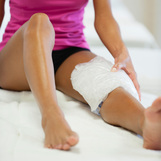 Competing in endurance races is tough on your body - mentally and physically. I’m not sure I could find anyone that would disagree. You work hard for months leading up to the big day. Endless workouts, focused nutrition, early bedtimes -- it all takes its toll eventually. When you’re done with our event, it might seem natural to indulge in a few extra pizza slices, sugary drinks, and too much alcohol. If you’re like me and like to skip the part after your race when you’re sore and feeling broken down, you should follow some guidelines to help you power through these tough times. This will help you recover faster and get over the sore and achy hump.
These tips should help control muscle damage and alleviate most non-injury-related soreness and aches after your event. The most important tip to remember is to be ready for your event. Spend the appropriate amount of time training for your race and most of your post-race woes can be completely avoided. |
AuthorSarah Flogel Archives
February 2017
Categories
All
|

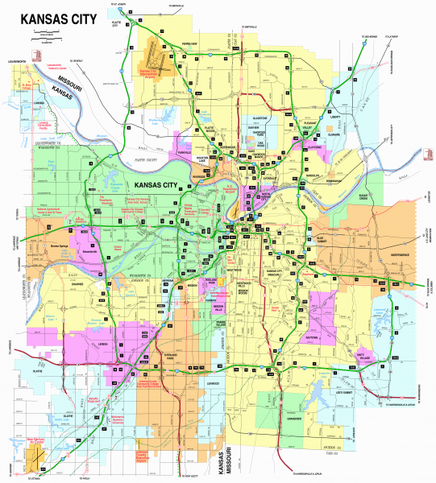
 RSS Feed
RSS Feed
